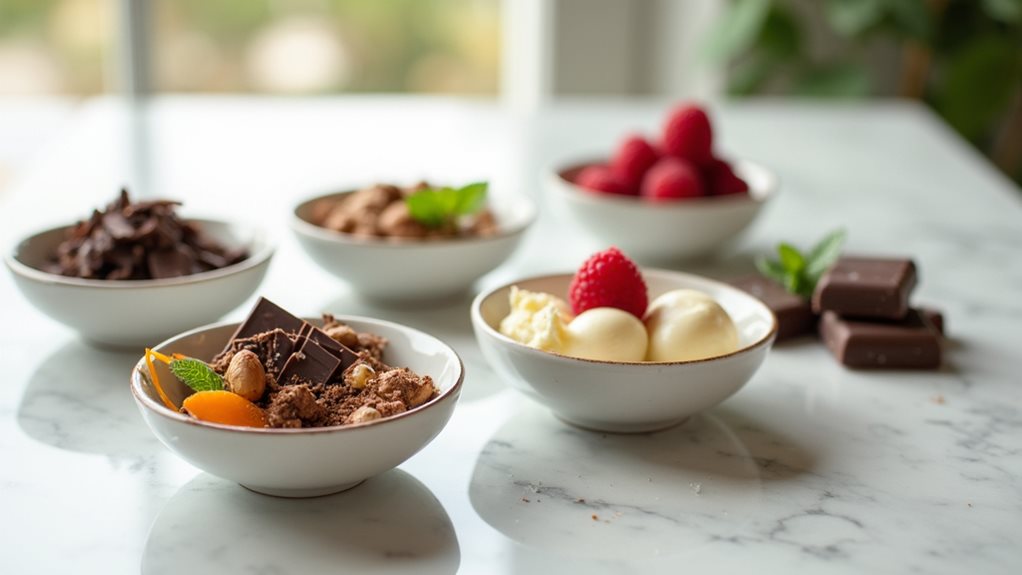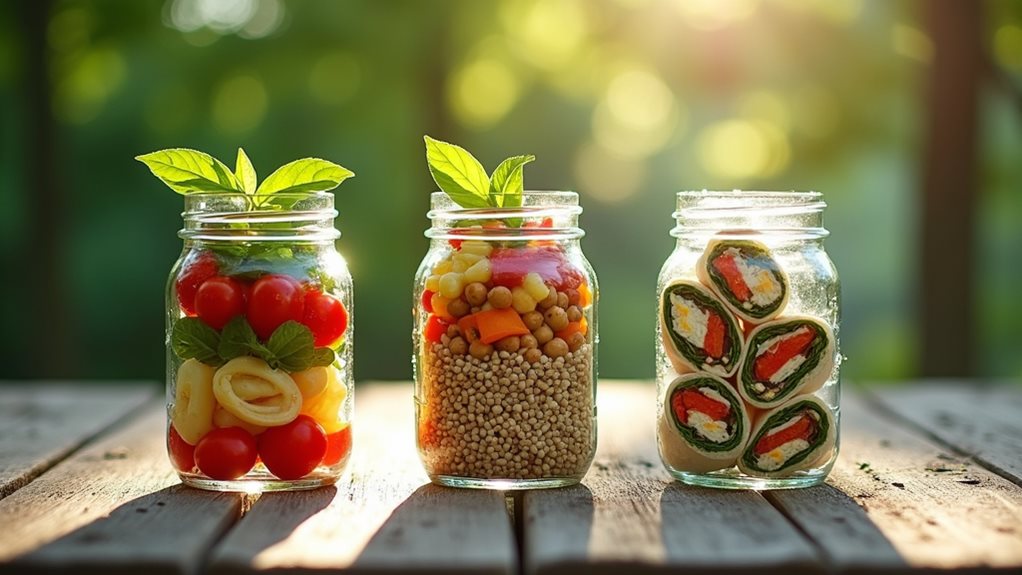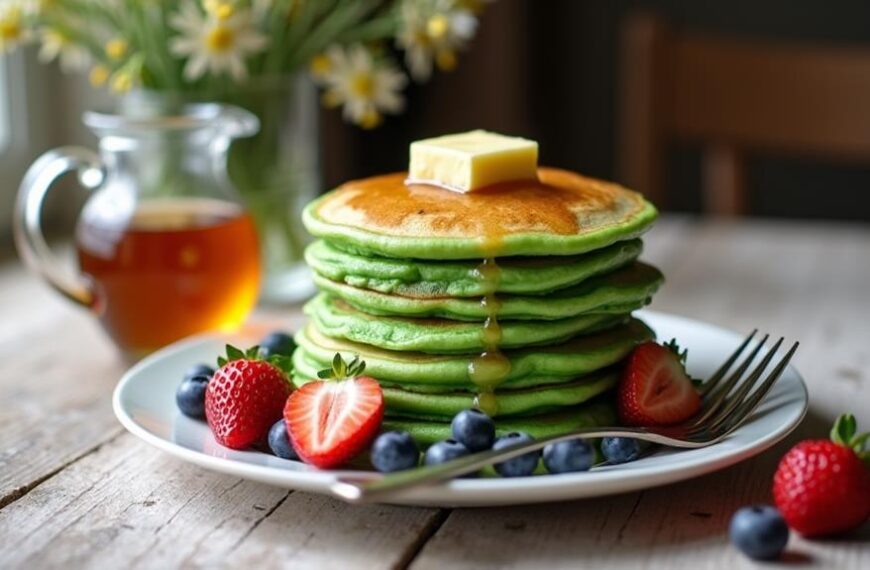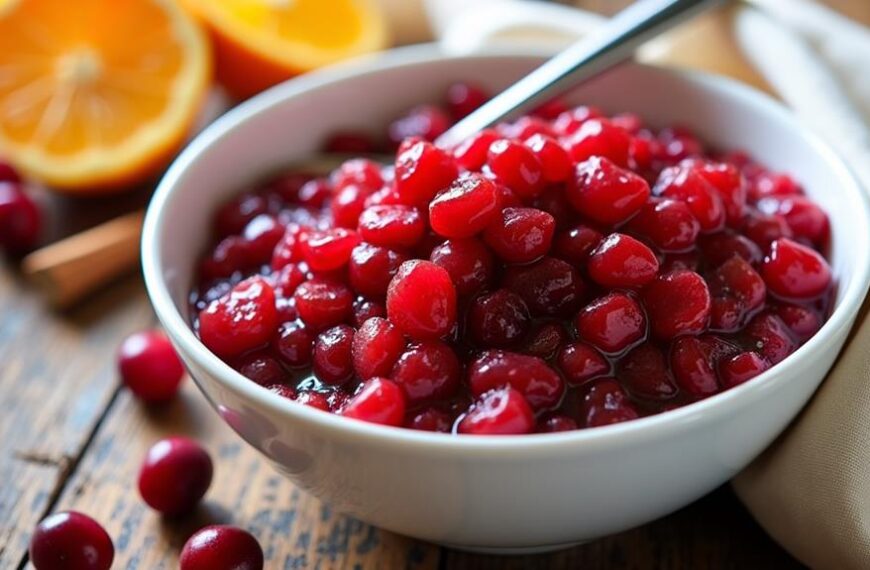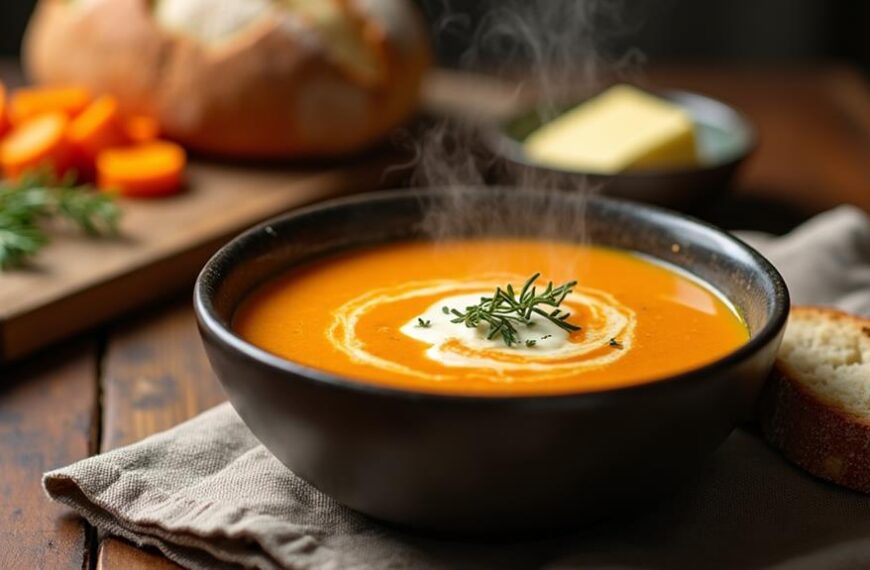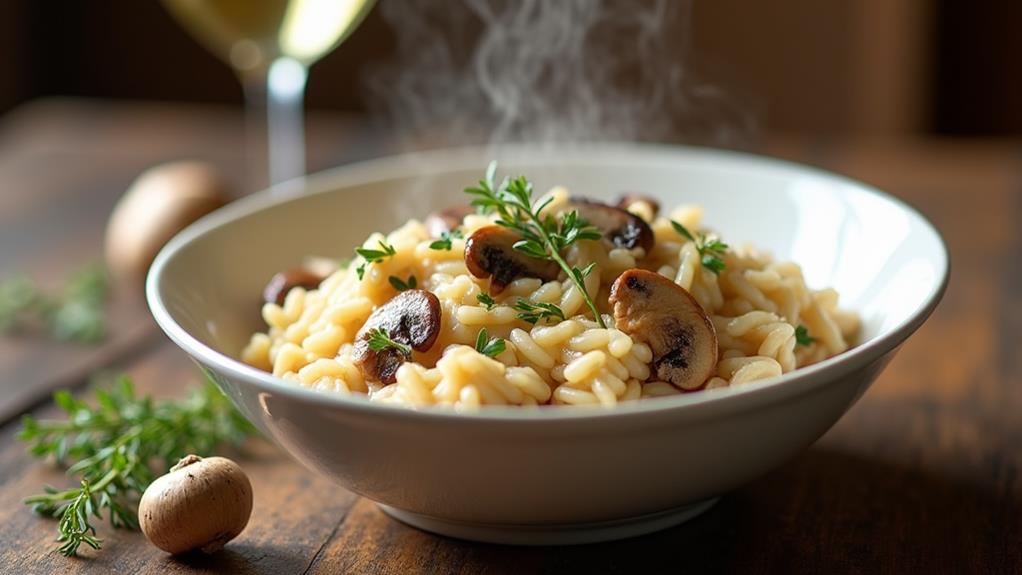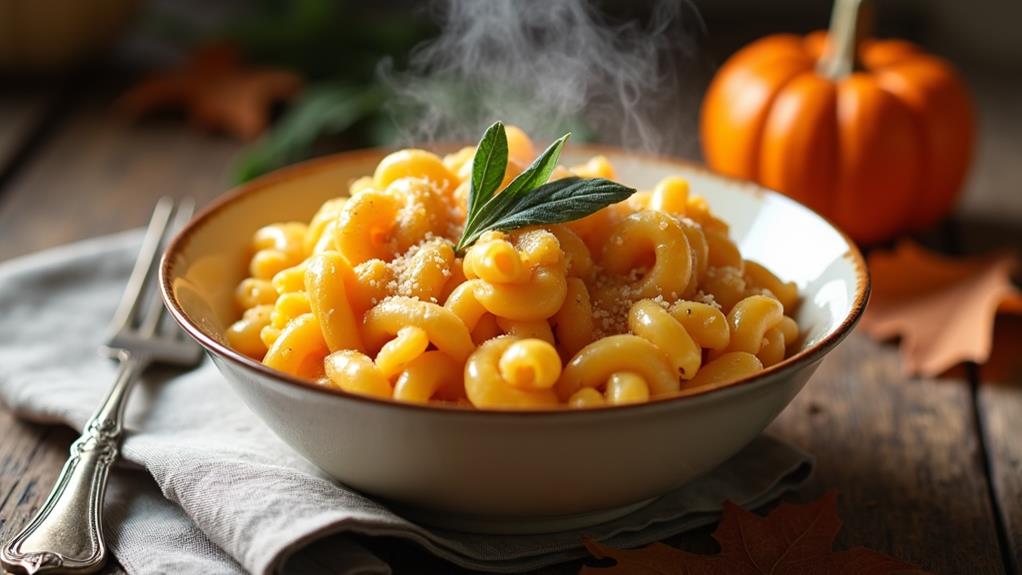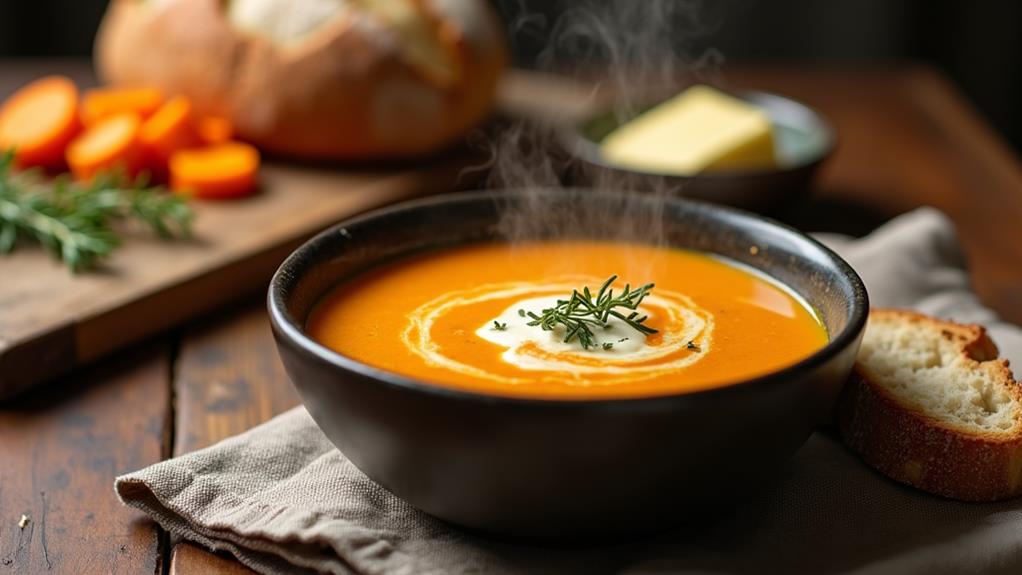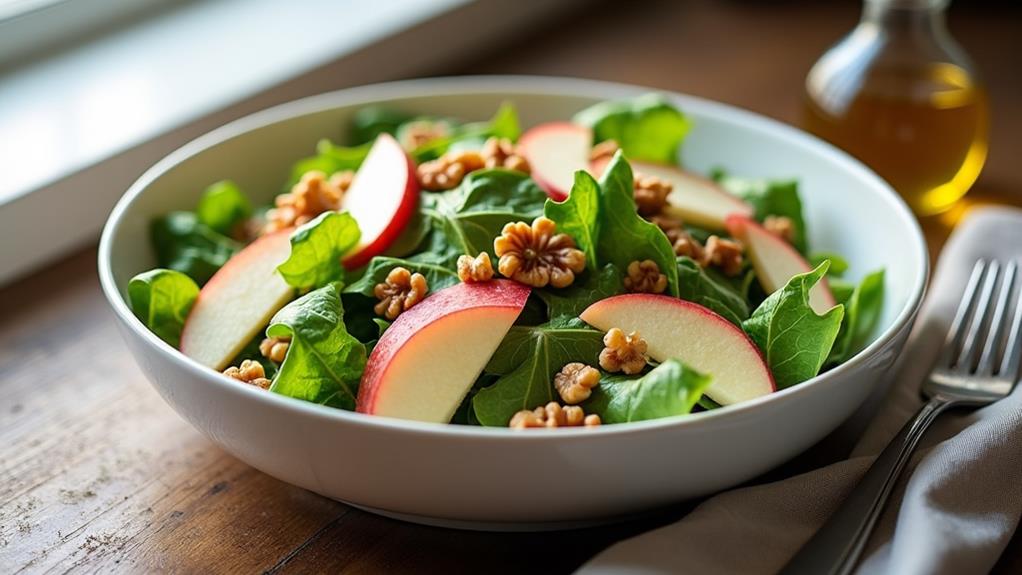You’ll find that five classic chocolate pairings consistently deliver exceptional results: dark chocolate with nuts creates perfect bitter-rich balance through complementary textures and antioxidants, milk chocolate with caramel and honey boosts sweetness with buttery depth, white chocolate with citrus provides bright acidity against creamy decadence, dark chocolate with dried fruits unites complex flavors through contrasting tartness, and chocolate with wine offers timeless elegance when properly matched by intensity levels. These combinations work because they balance contrasting elements while amplifying each ingredient’s natural characteristics, and exploring their nuances reveals countless possibilities for your culinary adventures.
Dark Chocolate and Nuts: The Perfect Balance of Bitter and Rich
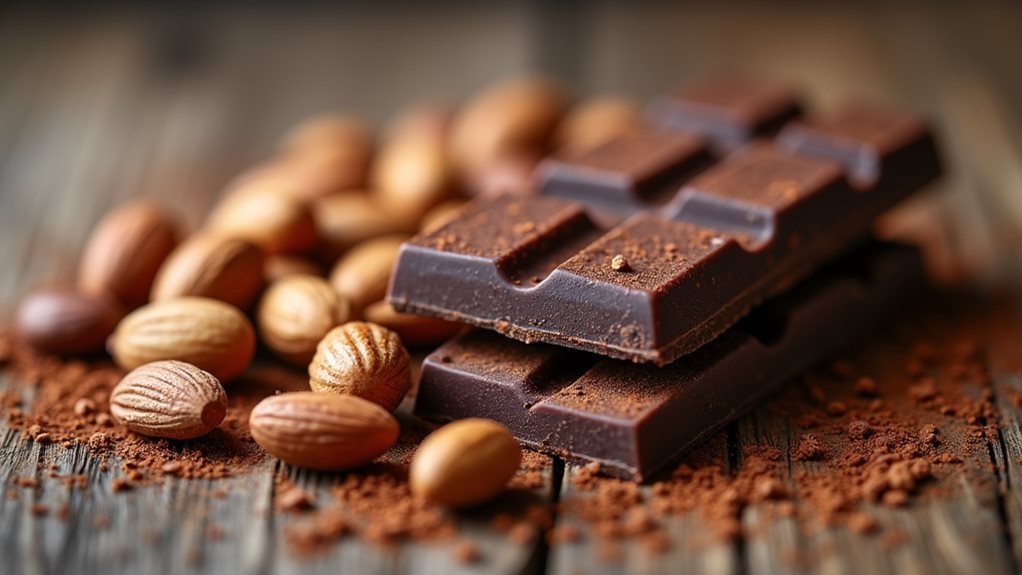
While chocolate enthusiasts have explored countless flavor combinations throughout history, the pairing of dark chocolate and nuts remains one of the most beloved and scientifically supported partnerships in the culinary world.
You’ll discover that this combination delivers exceptional antioxidant benefits, as both ingredients contain powerful flavonoids and polyphenols that support cardiovascular health and reduce oxidative stress.
The contrasting nutty textures create a sensory experience that’s both satisfying and complex, with the nuts’ crunchiness balancing dark chocolate’s velvety richness. Almonds, hazelnuts, and pecans add crunch and richness that perfectly complement dark chocolate’s natural depth.
The interplay between crunchy nuts and smooth dark chocolate creates a textural symphony that elevates both ingredients beyond their individual merits.
When you combine these ingredients, the nuts’ natural oils and proteins improve satiety while their minerals complement chocolate’s mood-boosting properties. Daily consumption of nuts has been linked to reduced inflammation in conditions like heart disease and diabetes, making this pairing even more beneficial for your health.
This pairing transforms a simple indulgence into a nutritionally dense snack that supports cognitive function and sustained energy. This combination shines in recipes like flourless brownies, where almond butter provides structure and enhances the chocolate’s intensity without requiring traditional flour.
Milk Chocolate With Caramel and Honey: Sweetness Enhanced
When you combine milk chocolate with caramel and honey, you’re creating one of confectionery’s most harmonious trios that transforms simple sweetness into a sophisticated flavor experience.
The creamy milk chocolate provides a velvety foundation, while caramel contributes deep, buttery notes improved by Maillard reaction compounds from the caramelization process. Different honey varieties introduce unique floral, fruity, or herbaceous complexities that raise the entire composition.
You’ll discover that various caramel textures, from soft and chewy to firm and glossy, create distinct mouthfeel experiences when paired with chocolate’s melt-in-mouth quality. Pacific Northwest honey sourced from over 100,000 flowers adds exceptional depth to chocolate caramels, creating award-winning flavor profiles that showcase regional terroir.
The moisture content in honey affects caramel’s final texture, allowing you to control the eating experience. This combination follows proven flavor pairing principles where complementary molecules and contrasting textures produce amplified sensory pleasure that appeals to sophisticated palates. The umami characteristics present in aged caramels add another layer of complexity to this classic pairing.
White Chocolate and Citrus: Bright Acidity Meets Creamy Decadence
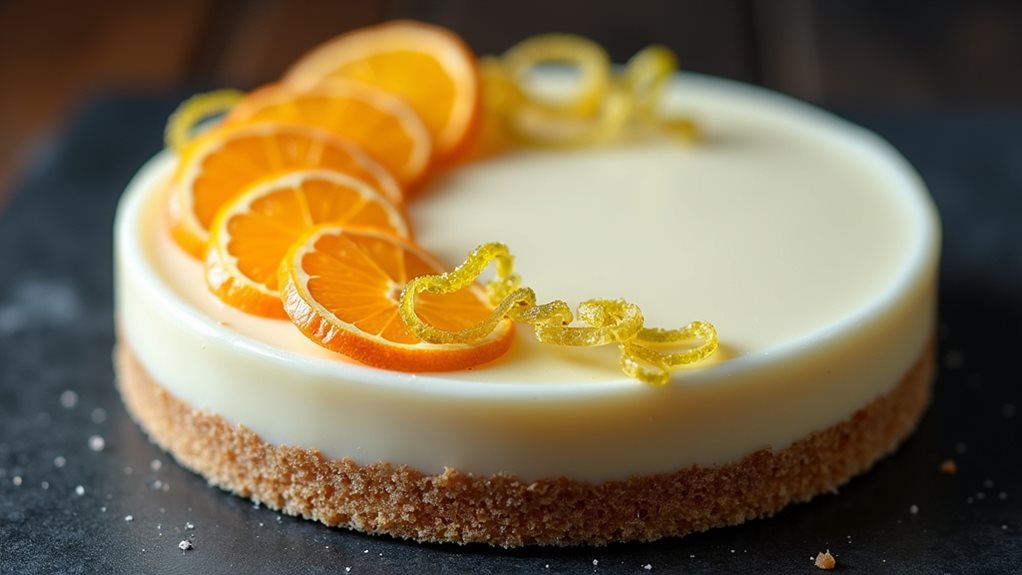
The marriage of white chocolate and citrus creates one of pastry’s most compelling contrasts, where creamy decadence meets bright acidity in perfect harmony.
Creamy richness dancing with zesty brightness—this classic pairing transforms ordinary desserts into extraordinary culinary symphonies that awaken every sense.
You’ll discover that citrus zest cuts through white chocolate’s richness, preventing cloying sweetness while adding aromatic oils that elevate flavor complexity. This pairing triggers salivation, cleansing your palate between bites and creating a revitalizing experience. Oranges and lemons are particularly effective at cutting through richness due to their natural acidity. This combination is particularly appealing as a refreshing summer dessert option when you crave something light yet indulgent.
Master these innovative dessert applications:
- Infused ganaches – Incorporate lemon or lime zest into white chocolate truffles for sophisticated confections
- Layered desserts – Combine citrus curds with white chocolate mousse for textural contrast
- Temperature play – Serve chilled citrus elements with room-temperature white chocolate to maximize sensory impact
- Aromatic enhancement – Use citrus oils to complement white chocolate’s vanilla and dairy notes
Dark Chocolate and Dried Fruits: Complex Flavors United
Dark chocolate’s complex flavor profile transforms dramatically when paired with dried fruits, creating a sophisticated balance that showcases both ingredients at their finest.
You’ll discover that tart options like dried cherries and cranberries cut through chocolate’s richness with revitalizing acidity, while sweet varieties such as apricots and figs soften its bitter edge.
The contrasting dried fruit textures add vital sensory dimension—chewy dates and figs create textural interest against velvety chocolate surfaces.
This pairing works because of complementary flavor intensity levels that improve rather than compete with each other. The natural sweetness of dried fruits enhances dark chocolate’s inherent richness while providing essential balance. Beyond taste enhancement, this combination delivers health benefits as both dried fruits and dark chocolate are packed with antioxidants that support heart health and boost your immune system.
Aromatic compounds in dried fruits interact with chocolate’s flavonoids, broadening your tasting experience to reveal hidden fruity and earthy notes.
You’re fundamentally creating a more complex, layered flavor profile that raises both components beyond their individual characteristics.
Chocolate and Wine: Timeless Elegant Combinations
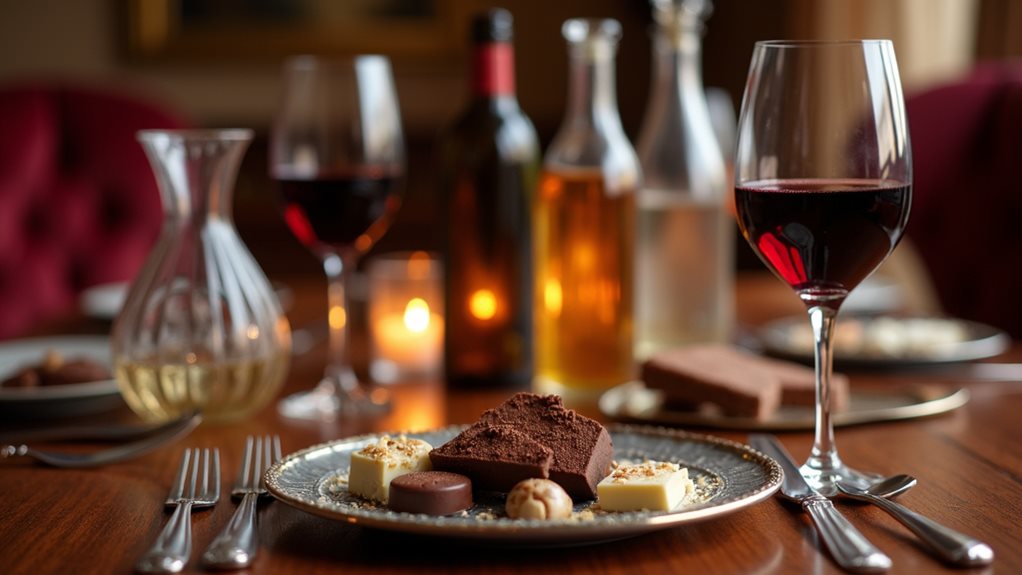
Although countless culinary pairings exist, few combinations achieve the sophisticated elegance of chocolate and wine working in perfect harmony.
You’ll discover that understanding wine varieties and pairing guidelines transforms simple tasting into extraordinary sensory experiences. The key lies in balancing sweetness levels, guaranteeing your wine contains more sweetness than the chocolate to prevent bitter, thin flavors.
Consider these crucial pairing guidelines:
- Match intensity levels – pair bold Cabernet Sauvignon with dark chocolate, light Pinot Noir with milk chocolate
- Complement textures – choose wines with soft tannins for creamy chocolates to avoid harsh clashes
- Bridge flavors – select wines sharing similar fruity, spicy, or nutty notes with your chocolate
- Balance contrast – use brighter wines to cleanse your palate when enjoying sweeter chocolate varieties
These principles guarantee consistently successful pairings. Whether you’re planning cozy nights, romantic dates, or sophisticated gatherings, these chocolate and wine combinations create memorable experiences for any occasion.
Professional studies reveal that sparkling wine pairs exceptionally well with lower cocoa content chocolates, offering a delightful contrast that enhances both flavors.
Frequently Asked Questions
How Do You Store Chocolate Pairings to Maintain Optimal Flavor?
For ideal chocolate storage and flavor preservation, you’ll maintain temperatures between 60-68°F with humidity below 55%. Use airtight containers to prevent odor absorption, avoid refrigeration, and consider each pairing’s unique moisture requirements for maximum freshness.
What’s the Ideal Chocolate-To-Pairing Ratio for Balanced Taste?
You’ll achieve balanced taste using pairing techniques that match flavor intensity—start with 70% chocolate to 30% accompaniment for dark varieties, adjusting based on your pairing’s boldness to create innovative, harmonious combinations.
Can Lactose-Intolerant People Enjoy Milk Chocolate Pairings With Alternatives?
You’re breaking barriers with lactose free options that release milk chocolate’s full potential. These creamy alternatives using oat, rice, or almond milk deliver identical pairing experiences, transforming dietary restrictions into delicious discoveries you’ll absolutely love.
Which Chocolate Pairings Work Best for Baking Versus Eating Fresh?
You’ll find baking techniques favor spiced dark chocolate with nuts for structural complexity, while fresh indulgence calls for acidic fruits cutting white chocolate’s sweetness. Innovation comes from experimenting with texture contrasts and bold flavor balances.
How Does Chocolate Percentage Affect Which Flavors Pair Best Together?
You’ll find chocolate intensity directly impacts flavor balance—higher percentages demand bolder partners like espresso or spices, while lower percentages harmonize with delicate fruits and florals, creating innovative pairings through strategic percentage selection.
Final Thoughts
You’ve now discovered five timeless chocolate pairings that’ll enhance your dessert game considerably. Here’s something fascinating: chocolate contains over 600 flavor compounds, which explains why it pairs so beautifully with diverse ingredients from nuts to wine. Whether you’re crafting homemade treats or selecting premium confections, these classic combinations won’t disappoint your taste buds. Start experimenting with these proven pairings, and you’ll create memorable chocolate experiences that showcase the ingredient’s exceptional versatility and complexity.

